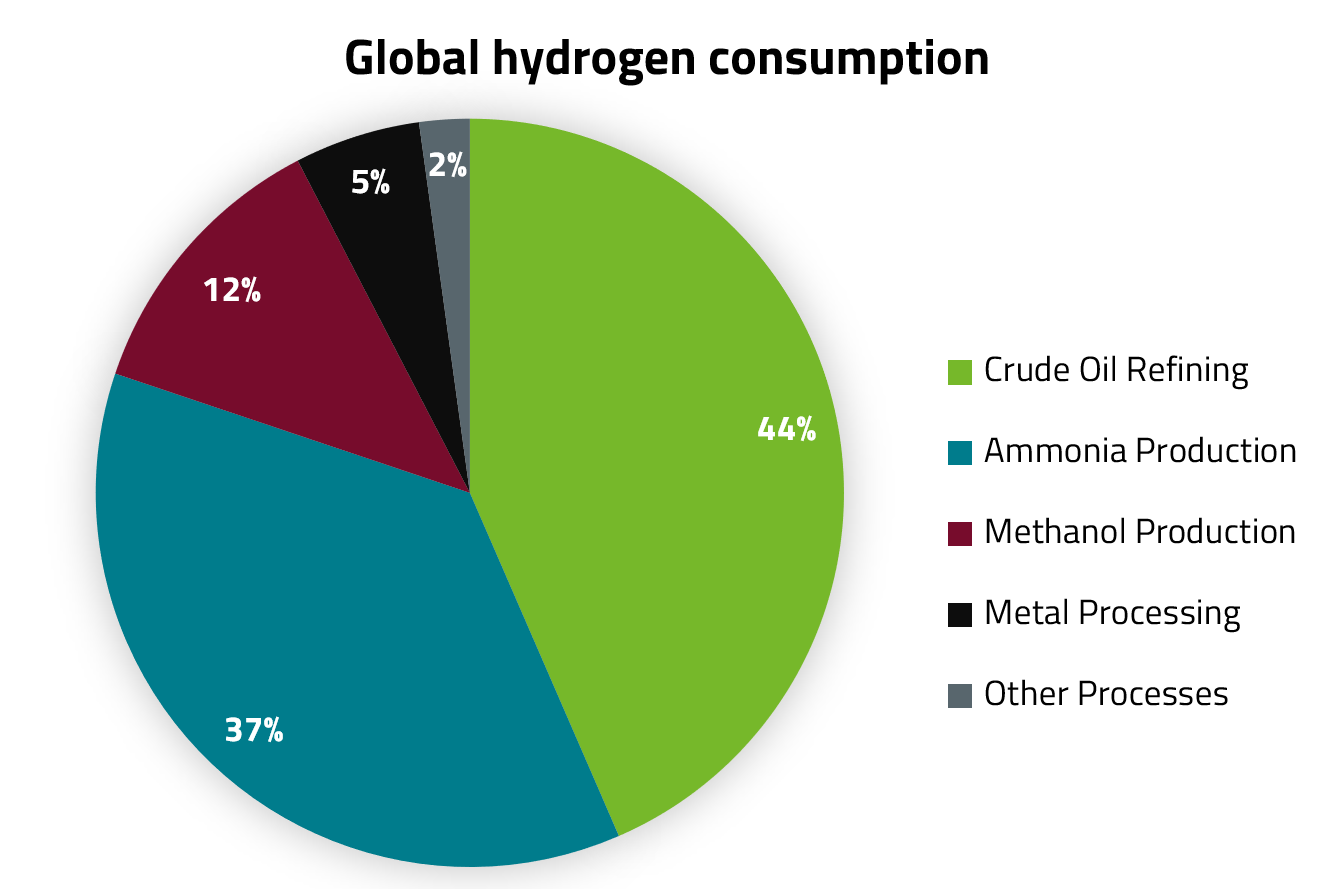4.1 Technical Principles and Status Quo
Material use
Nowadays, hydrogen is used almost exclusively as a material. In 2020, the hydrogen amount used worldwide was around 90 million tonnes. In the last twenty years, the annual demand has increased by 50 %. The hydrogen used today is largely produced from fossil raw materials, apart from a few exceptional cases (see Chapter 2.1).
Far more than 90 % of global hydrogen demand comes from crude oil refining and the chemical industry. At 45 million tonnes, the chemical industry accounts for about half of the total annual hydrogen demand. These 45 million tonnes are in turn mainly allocated to the production of ammonia and methanol. Hydrogen use in the production and processing of metals also accounts for a smaller share. Other, quantitatively insignificant fields of application for hydrogen are the food industry and its use as a coolant. The figure below gives an overview of the shares of the different application fields in global hydrogen consumption.
